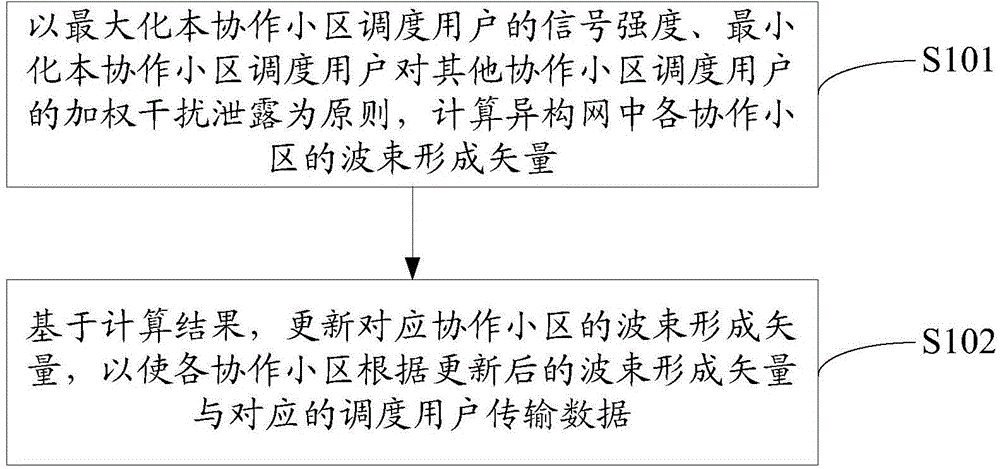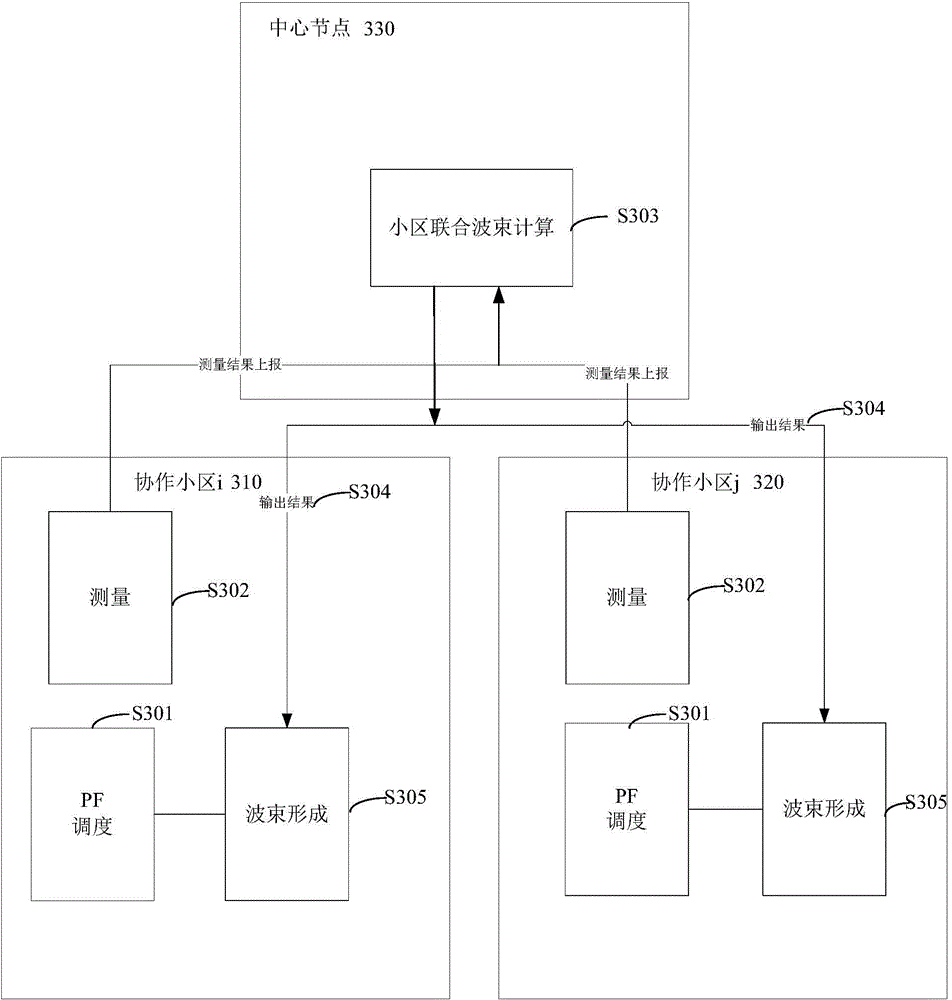Multi-cell beam forming method and multi-cell beam forming device
A multi-cell, beam technology, applied in the direction of location diversity, diversity/multi-antenna system, space transmit diversity, etc., can solve the problems of performance limitation and user beam selection influence
- Summary
- Abstract
- Description
- Claims
- Application Information
AI Technical Summary
Problems solved by technology
Method used
Image
Examples
Embodiment 1
[0054] An embodiment of the present invention provides a multi-cell beamforming method, such as figure 1 shown, including:
[0055] Step S101: Calculate the beamforming vector b of each coordinated cell in the heterogeneous network based on the principle of maximizing the signal strength of the scheduled user in the coordinated cell and minimizing the weighted interference leakage from the scheduled user in the coordinated cell to the scheduled users in other coordinated cells q ;
[0056] In this embodiment, considering that the calculation beamforming vectors of heterogeneous networks are divided into two types: distributed and centralized structures, so in the present invention, the subjects of calculating beamforming vectors of heterogeneous networks with different structures are different to adapt to each structure, Expressed as:
[0057] For the centralized heterogeneous network beamforming vector calculation, the preset central node calculates the beamforming vector b...
Embodiment 2
[0155] An embodiment of the present invention provides a multi-cell beamforming device, such as Image 6 shown, including:
[0156] The calculation module 610 is used to calculate the beamforming vector b of the coordinated cell in the heterogeneous network based on the principle of maximizing the signal strength of the scheduled user of the coordinated cell and minimizing the weighted interference leakage of the scheduled user of the coordinated cell to the scheduled user of other coordinated cells q ;
[0157] An update module 620, configured to update the beamforming vector b of the corresponding coordinated cell based on the calculation result of the calculation module q , so that the corresponding coordinated cell according to the updated beamforming vector b q The corresponding scheduled user transmits data.
[0158] Preferably, the calculation module 610 specifically includes:
[0159] An information collection unit 611, configured to collect measurement data collec...
Embodiment 3
[0169] An embodiment of the present invention provides a coordinated base station covering one or more coordinated cells in a heterogeneous network system, and the coordinated base station includes the multi-cell beamforming device described in Embodiment 2.
[0170] Further, when the heterogeneous network system is a centralized system, the cooperative base station not selected as the central node turns off the function of its own multi-cell beamforming device; the cooperative base station selected as the central node enables the multi-cell beamforming device , and calculate the beamforming vectors of each cooperative cell in the heterogeneous network system one by one;
[0171] When the heterogeneous network system is a distributed system, all cooperative base stations enable their own multi-cell beamforming devices, and each cooperative base station calculates the beamforming vector of the corresponding cooperative cell one by one, and calculates the corresponding beamformin...
PUM
 Login to View More
Login to View More Abstract
Description
Claims
Application Information
 Login to View More
Login to View More - R&D
- Intellectual Property
- Life Sciences
- Materials
- Tech Scout
- Unparalleled Data Quality
- Higher Quality Content
- 60% Fewer Hallucinations
Browse by: Latest US Patents, China's latest patents, Technical Efficacy Thesaurus, Application Domain, Technology Topic, Popular Technical Reports.
© 2025 PatSnap. All rights reserved.Legal|Privacy policy|Modern Slavery Act Transparency Statement|Sitemap|About US| Contact US: help@patsnap.com



